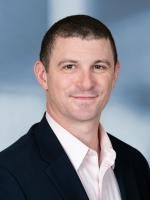OSHA has partially reopened the rulemaking record and scheduled an informal public hearing to seek comments on several topics relating to the development of a final standard to protect healthcare and healthcare support service workers from workplace exposure to COVID-19. In June of last year, OSHA issued an Emergency Temporary Standard (ETS) to protect workers in healthcare settings from occupational exposure to the virus. This ETS also served as a proposed rule and focused on healthcare workers most likely to have contact with people infected with the virus.
OSHA is partially reopening the rulemaking record to receive new data and comments on topics, including the following:
-
Alignment with the Centers for Disease Control and Prevention’s recommendations for healthcare infection control procedures.
-
Additional flexibility for employers.
-
Removal of scope exemptions.
-
Tailoring controls to address interactions with people with suspected or confirmed COVID-19.
-
Employer support for employees who wish to be vaccinated.
-
Limited coverage of construction activities in healthcare settings.
-
COVID-19 recordkeeping and reporting provisions.
-
Triggering requirements based on community transmission levels.
-
The potential evolution of SARS-CoV-2 into a second novel strain.
-
The health effects and risk of COVID-19 since the ETS was issued.
The public can submit comments online in Docket No. OSHA-2020-0004, no later than April 22, 2022, on this website. The public may also testify at a virtual hearing that will begin on April 27, 2022. A notice of intention to appear must be submitted no later than April 6, 2022.
OSHA also reminds healthcare employers that they must continue to comply with their obligations under the General Duty Clause, Personal Protective Equipment and Respiratory Protection Standards, as well as other applicable OSHA standards meant to protect their employees against the hazard of COVID-19 in the workplace.
As a reminder, OSHA is in the first few weeks of its three-month long enforcement initiative for hospitals and nursing care facilities.




 />i
/>i

